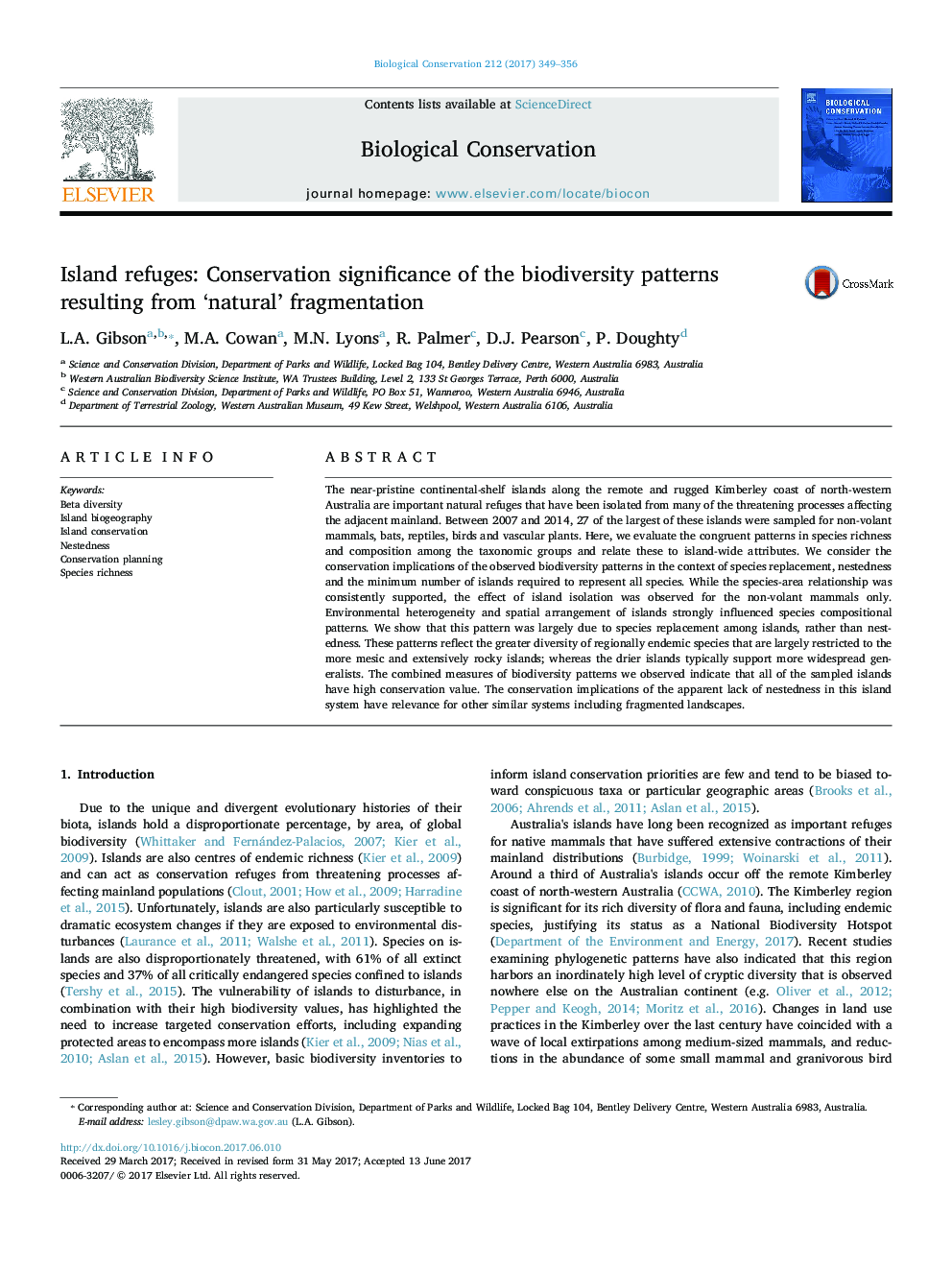| Article ID | Journal | Published Year | Pages | File Type |
|---|---|---|---|---|
| 5743117 | Biological Conservation | 2017 | 8 Pages |
Abstract
The near-pristine continental-shelf islands along the remote and rugged Kimberley coast of north-western Australia are important natural refuges that have been isolated from many of the threatening processes affecting the adjacent mainland. Between 2007 and 2014, 27 of the largest of these islands were sampled for non-volant mammals, bats, reptiles, birds and vascular plants. Here, we evaluate the congruent patterns in species richness and composition among the taxonomic groups and relate these to island-wide attributes. We consider the conservation implications of the observed biodiversity patterns in the context of species replacement, nestedness and the minimum number of islands required to represent all species. While the species-area relationship was consistently supported, the effect of island isolation was observed for the non-volant mammals only. Environmental heterogeneity and spatial arrangement of islands strongly influenced species compositional patterns. We show that this pattern was largely due to species replacement among islands, rather than nestedness. These patterns reflect the greater diversity of regionally endemic species that are largely restricted to the more mesic and extensively rocky islands; whereas the drier islands typically support more widespread generalists. The combined measures of biodiversity patterns we observed indicate that all of the sampled islands have high conservation value. The conservation implications of the apparent lack of nestedness in this island system have relevance for other similar systems including fragmented landscapes.
Keywords
Related Topics
Life Sciences
Agricultural and Biological Sciences
Ecology, Evolution, Behavior and Systematics
Authors
L.A. Gibson, M.A. Cowan, M.N. Lyons, R. Palmer, D.J. Pearson, P. Doughty,
